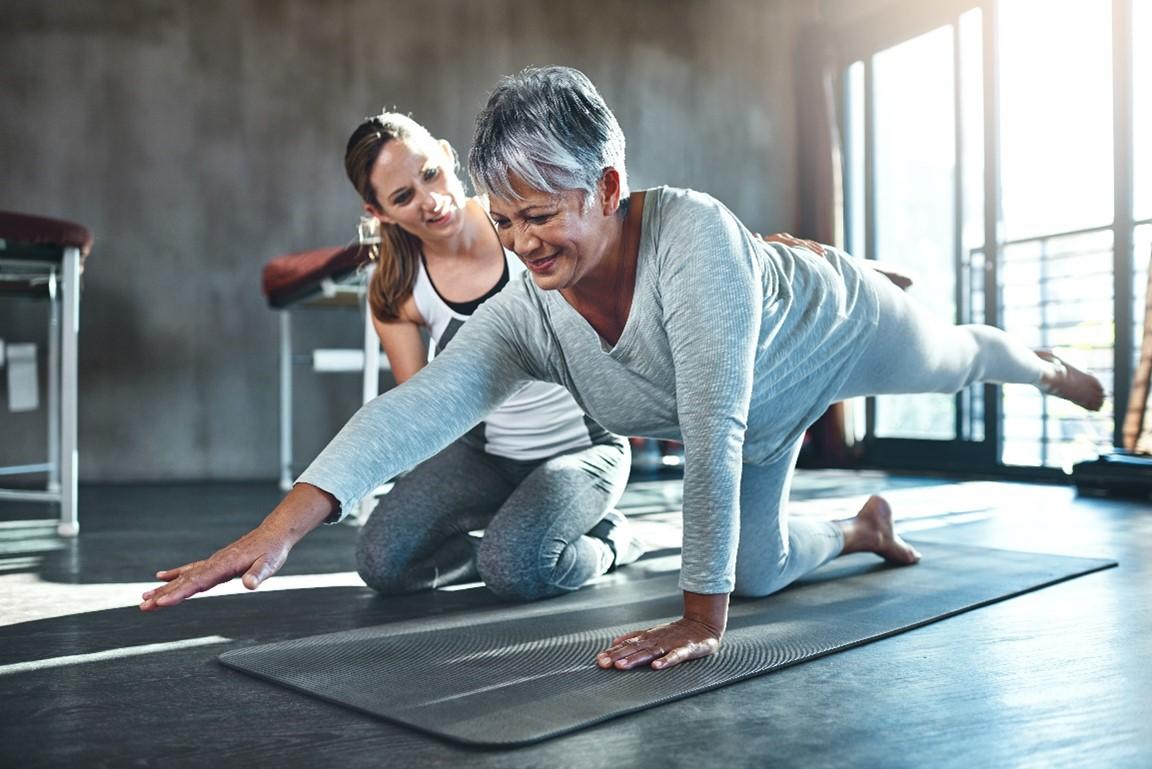Everything You Need To Know: Laura Yammouni, Continence and Women’s Health Physiotherapist
Women’s, Men’s and Pelvic Health Physiotherapy is a unique branch of physiotherapy that supports women, men and children’s pelvic health.
Pelvic health is often challenged throughout the course of our lives.
As children, toilet training can be challenging for some, particularly around starting school or with the addition of a new family member.
For men the diagnosis and treatment of prostate cancer can lead to urinary leakage and erectile dysfunction.
While for women hormonal changes throughout different times of their lives from puberty, pregnancy, postnatal and menopause can lead to a number of pelvic health conditions including pelvic pain, pain with sexual intercourse, urinary of faecal incontinence to pelvic girdle pain, abdominal separation and issues surrounding bone and tendon health.
For many of my patients these conditions are seen as a normal part of life or a consequence of their cancer treatment, or a result of having had 1 or more children, and often they suffer with these symptoms in silence believing that nothing can be done to help.
This article will explain how a Women’s, Men’s and Pelvic Health Physiotherapist can help you or your loved one, and what you can expect from your first session. My hope is that this article will offer you hope, and that it is the first step in your journey to better pelvic health.
Overview:
A Women’s, Men’s and Pelvic Health Physiotherapist will often hold a postgraduate certificate or a Clinical Master’s degree focusing on the assessment and treatment of conditions affecting the pelvis, bladder, bowel and pelvic floor in women, men and children. Common conditions that are often treated include:
For Women:
- Urinary leakage with Exercise
- Urinary frequency or urgency +/- Leakage
- Faecal frequency or urgency +/- Leakage
- Constipation
- Pelvic organ prolapse or a sense of heaviness or dragging sensation felt in the vagina
- Pelvic pain
- Pain with sexual intercourse
- Rectal pain
- Breast cancer rehab: including scar management, improving mobility, flexibility, fatigue and managing lymphedema.
- Menopause: Bone and heart health and assisting in managing symptoms such as hot flushes
- Coccyx pain
- Pelvic girdle pain
- Low back pain
- Hip pain
- Pregnancy education and labour preparation
- Exercise during pregnancy and postnatal period
- Abdominal separation
For Men:
- Urinary Leakage
- Urinary frequency or urgency +/- Leakage
- Faecal frequency or urgency +/- Leakage
- Constipation
- Pelvic pain
- Prostatectomy rehabilitation
- Erectile dysfunction
For Children:
- Constipation
- Faecal leakage
- Urinary leakage
- Bed wetting
- Giggle incontinence
What to expect from your first session:
Your first session will be 1 hour long while subsequent session maybe 30 minutes.
I won’t lie, we get up close and personal very quickly! In our first session we ask questions about your bowel, bladder and sexual health. You may not feel like answering all my questions and that is completely fine, I understand that there is a lot of vulnerability when talking about these topics and that you may not want to open up completely in your first session.
You may also walk out of the session feeling overwhelmed by the amount of information that you will receive. A lot of what we educate patients on is often new for many of them. While on the other hand many can feel frustrated that they are only just now learning about how their bodies work. For this reason, we have created handouts that go over the key points discussed in your first session giving you a reference point when you get home. Topics will often be revisited in subsequent sessions.
A thorough discussion will educate you about what your symptoms may mean and some things you can implement straight away to help. Following this a physical assessment will be offered. For the most part this will include assessing muscles and joints the same way you would be used to if you have seen a physiotherapist in the past. Where I differ is when it comes to assessing your pelvic floor muscles.
There are two options for assessing the pelvic floor and you may be offered one or both depending on your particular case. The first is using the real-time ultrasound where the head of the ultrasound is placed on your lower stomach to get a real-time view of how the muscles are contracting. This is non-invasive and the best tool when treating children. Due to the location of the pelvic floor muscle more often than not an internal pelvic exam maybe offered. It is understandable that you may feel anxious about this. Your physiotherapist will explain the rationale behind the assessment and demonstrate how it will be performed using a pelvic model. Once the options for assessment have been explained it is up to you to decide how you would like to proceed and know that you can change your mind at any time.
At the end of your first visit, you will walk away with an individualised treatment plan to help you reach your pelvic health goals.
If you have any questions, please feel free to reach out to me via email: laurayammouni@alphingtonsportsmed.com.au or to book an appointment please call 9481 5744.
Laura Yammouni
Continence and Women’s Health Physiotherapist
B. H. Science M. Phys. Practice. La Trobe Uni
M. Clin. Phys. Continence & Women's Health Curtin Uni
A summary of our Women’s, Men’s and Pelvic Health Physiotherapy services can be found on this flyer.



